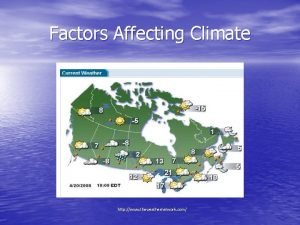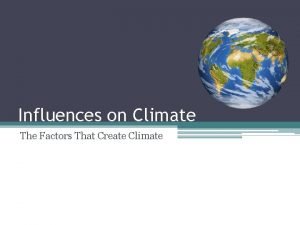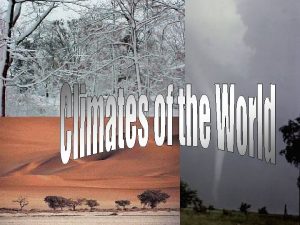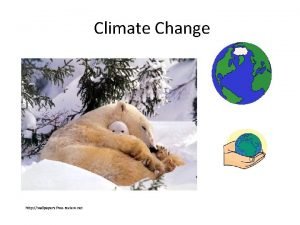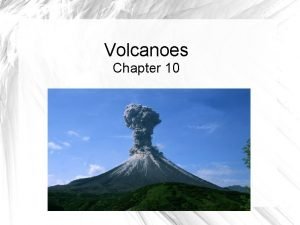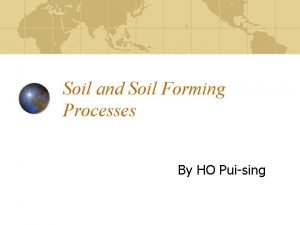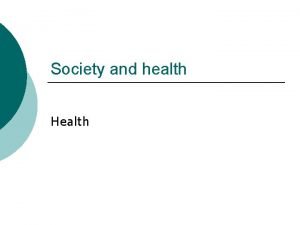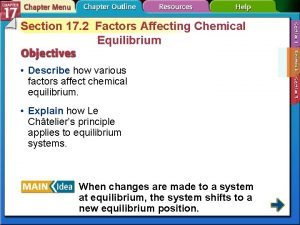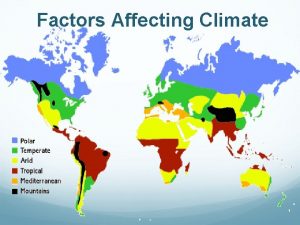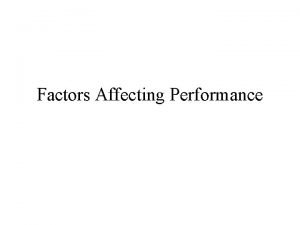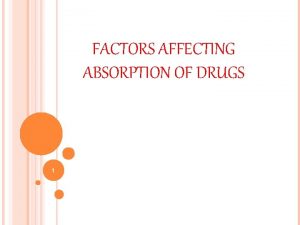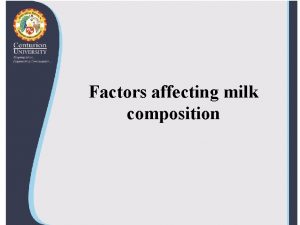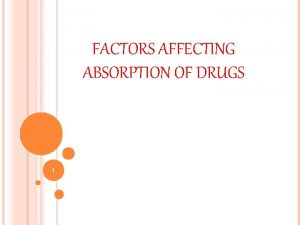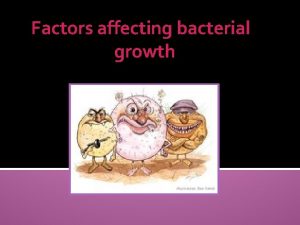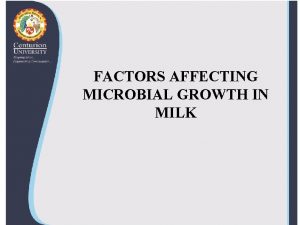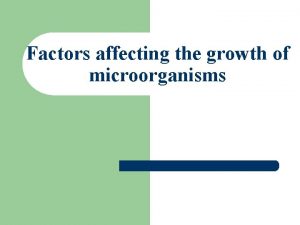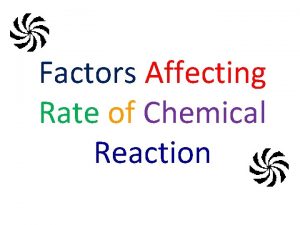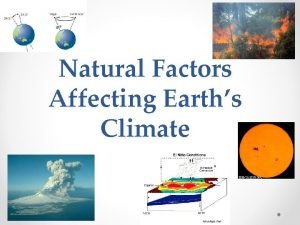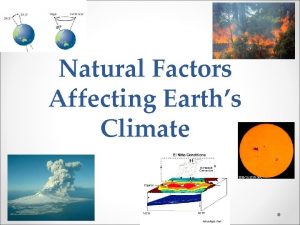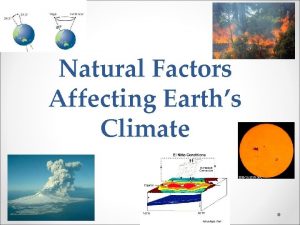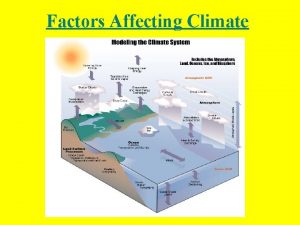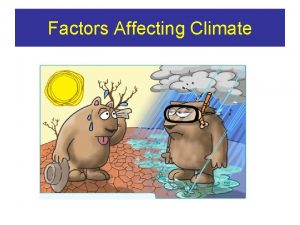Factors Affecting Climate http www theweathernetwork com Climate






















- Slides: 22

Factors Affecting Climate http: //www. theweathernetwork. com/

Climate vs. Weather • Weather is the day to day conditions of the atmosphere. – Temperature – Precipitation

Weather vs. Climate • Climate is the daily weather conditions of a place (station) averaged over a long period; generally on a yearly basis

Why is there a big difference in climate across Canada?

6 Factors That Affect Climate: 1. Latitude 2. Ocean Currents 3. Wind & Air Masses 4. Elevation 5. Relief 6. Nearness to Water

6 Factors That Affect Climate: 1. Latitude 2. Ocean Currents 3. Wind & Air Masses 4. Elevation 5. Relief 6. Nearness to Water

1. Latitude http: //atropos. arizona. edu/aiz/teaching/a 250/lecture 1. html • The farther you are located from equator the less energy you receive • Less energy = lower temperature • Link http: //www. astronomy. ohio-state. edu/~pogge/Teach. Res/Artwork/Sky/Equator_earth. gif



http: //www. windows 2 universe. org/earth/climate/sun_radiation_at_earth. html

2. Ocean Currents • Water closer to the equator is warmer as it absorbs more energy from the sun • Water warms/cools the air above it http: //www. galapagosonline. com/nathistory/Oceanography/Currents. html


3. Winds and Air Masses • Air heated or cooled by land or water • Hot air rises, cold air falls • Air moves from high to low pressure = wind • Established winds are called Prevailing winds – Westerlies http: //rst. gsfc. nasa. gov/Sect 14_1 c. html

http: //weatherstreet. com/weatherquestions/jet_stream. jpg

4. Elevation • As air rises, it expands & cools – Lower air pressure • As air cools, it leads to condensation – Clouds turn to rain/snow • Rate of cooling: 1°C/100 m

5. Relief 1. Air rises up the windward 2. 3. 4. slope of a mountain, expands & cools When clouds become too heavy, precipitation occurs As cold air descends on the leeward slope, it contracts and becomes warmer. A rain shadow is created as most of the moisture was already released (Relief Precipitation)

6. Nearness to Water • The temperature of water • • changes slowly Temperature of air & land changes more quickly 2 distinct climates: – Continental Climate • Great temperature range • Less precipitation – Maritime Climate • Small temperature range • More precipitation


Maritime vs. Continental

Maritime vs. Continental

Review: Factors That Affect Climate 1. 2. 3. 4. 5. 6. Latitude Ocean Currents Wind & Air Masses Elevation Relief Nearness to Water

Review: Factors That Affect Climate 1. 2. 3. 4. 5. 6. Latitude Ocean Currents Wind & Air Masses Elevation Relief Nearness to Water
 Bài thơ mẹ đi làm từ sáng sớm
Bài thơ mẹ đi làm từ sáng sớm Cơm
Cơm Www.theweathernetwork
Www.theweathernetwork Ocean currents
Ocean currents What are the factors affecting the climate
What are the factors affecting the climate Climate vs weather
Climate vs weather Lesson 2 factors affecting climate
Lesson 2 factors affecting climate Factors affecting global warming
Factors affecting global warming How is climate change affecting health
How is climate change affecting health Factors affecting microbial growth in food
Factors affecting microbial growth in food Types of volcanoes
Types of volcanoes Factors affecting volcanic eruption
Factors affecting volcanic eruption Simple carburetor diagram
Simple carburetor diagram Differential thermal analysis graph
Differential thermal analysis graph Factors affecting housing choices
Factors affecting housing choices Factors responsible for bilingualism and multilingualism
Factors responsible for bilingualism and multilingualism Five factors affecting human movement
Five factors affecting human movement Stroke volume
Stroke volume Factors affecting movement in physical education
Factors affecting movement in physical education Baricity of local anesthetics
Baricity of local anesthetics Puising
Puising Factors affecting health
Factors affecting health Factors that affect chemical equilibrium
Factors that affect chemical equilibrium


